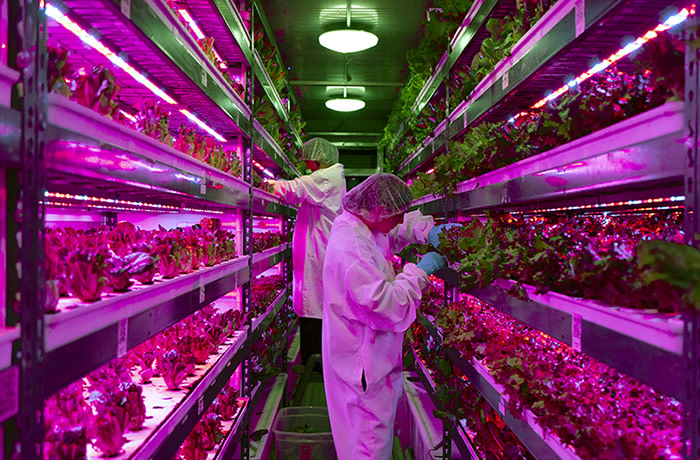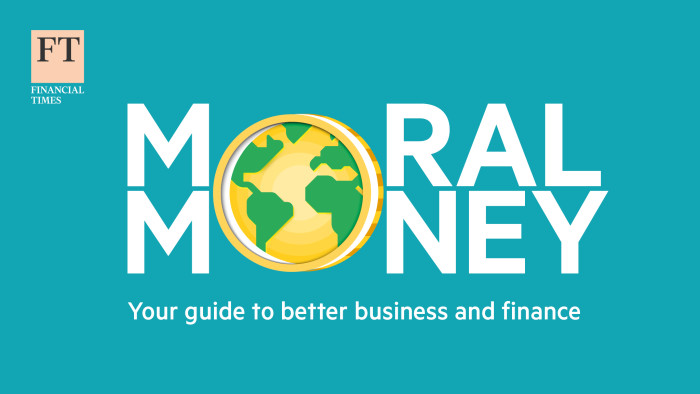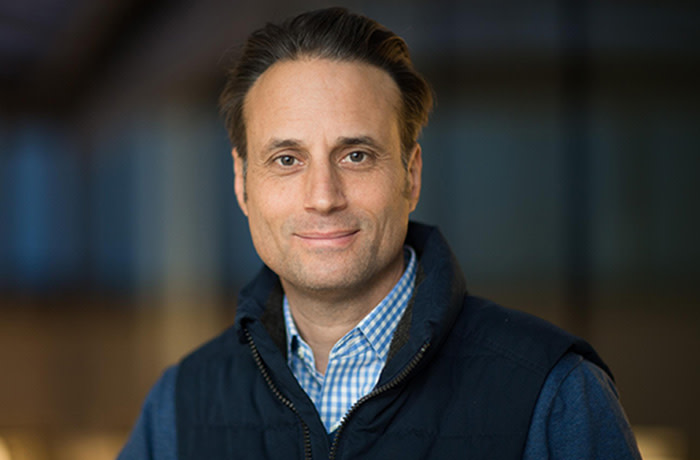Tackling climate change — an investor’s guide
Roula Khalaf, Editor of the FT, selects her favourite stories in this weekly newsletter.

“I don’t want your hope. I don’t want you to be hopeful. I want you to panic.”
Climate change activist Greta Thunberg was not giving investment advice when she delivered this message to the World Economic Forum in Davos this year. Just as well: panicking is not widely considered to be part of a good investment strategy, as those who sell at the bottom of the market can attest.
But with climate change increasingly in the news after the hottest recorded July on record and the burning of the Amazon rainforest, those who agree with Ms Thunberg that hoping for the best isn’t good enough can take action — by investing.
A new wave of investment from the private sector is being funnelled into cutting-edge technological solutions to climate change, from improving energy efficiency to renewable storage solutions to alternative meat. Such investments come under the heading of environmental, social and governance (ESG) strategies, an increasingly popular investment segment. Rather than avoiding certain companies, such as tobacco or arms manufacturers — via so-called negative screening — climate change investing tends to be a form of positive screening, in other words actively choosing to invest in companies that are trying to make a difference.
“Climate has become the biggest theme in ESG investing,” says Hortense Bioy, director of passive strategies and sustainability research at Morningstar. “We have seen an acceleration of product development in that space in the past couple of years, triggered by the Paris Climate Accord in 2015 and the need to keep global warming to below two degrees Celsius.”
But those who want to recast their investments to address climate change will face a number of decisions over what companies or funds to invest in and how to reduce the risks of narrowing their selection criteria. What counts as a climate-friendly investment strategy? And what returns might investors be sacrificing — or gaining — by the transformation of their portfolio?
Selection and performance
Ms Bioy identifies two ways in which investors can adjust their portfolios with climate change in mind. One is based on reducing risk, as investors choose a more passive approach of avoiding exposure to companies that are less likely to do well in a world that is getting hotter. Those might include oil and gas companies, or those heavily exposed to coal or more highly polluting industries.
The other way is to consider climate change as an investment opportunity and look for companies that will aid or benefit from the transition to a low carbon economy. Ms Bioy says funds that are trying to do this include Templeton Global Climate Change, Aviva Investors Climate Transition European Equity Fund, and DWS Invest Climate Tech fund. There has also been a proliferation of green bond funds, which invest in the financing of environmental projects. Seven have launched in Europe this year alone, she says.
Each approach has its adherents and critics, as was brought home this week when Bill Gates told the Financial Times that campaigns urging investors to divest from fossil fuels were ineffective as a means of reducing carbon emissions. Much better, the billionaire Microsoft co-founder said, to invest in ventures working on innovations to cut greenhouse gases. “Divestment, to date, probably has reduced about zero tonnes of emissions,” he said. “It’s not like you’ve capital-starved [the] people making steel and gasoline.”
Bruce Jenkyn-Jones, a director at Impax Asset Management, a sustainable investment specialist, says investors in climate change do not have to surrender returns. Rather, the theory is that as governments and companies around the world face more pressure to change their behaviour, those finding solutions to climate change will yield strong returns.
“If you can find companies helping to solve environmental problems, that will be a growth market,” Mr Jenkyn-Jones notes.
Fund managers at Impax look first at where the big emissions are coming from. The “main culprits”, he says, tend to be energy, transport, food and agriculture. The “circular economy” is also an important subsector in any mitigation strategy: improving recycling and reducing waste in the economy. Among the top 10 holdings of the Impax Environmental Markets fund, for example, is DS Smith, a recycling and waste management company. Another top 10 holding is Lenzing, which produces a more sustainable alternative to viscose made from wood, and supplies high street clothing brands such as Monsoon and Esprit.

High tech and low tech answers
Innovation, often in technology, abounds in the area of climate change investment. Crop One, for example, is a specialist in vertical farming, where crops are grown indoors and use 99 per cent less water compared with traditional agriculture. It has been targeting private investors in the US through a qualified opportunity fund, which offers various tax breaks.
Winnow, a food waste management company, uses artificial intelligence technology linked to cameras on bins in restaurants. By using image recognition to track what is being thrown away, restaurants can then amend their pricing accordingly.
Precision agriculture is another area where technology is being developed to help farmers. Software installed on farm machines can tap data on weather and soil conditions, helping farmers to optimise planting and minimise use of resources such as water or fertiliser. One company working in this area is Trimble Navigation, a California-based tech company.
Meanwhile, as storms and floods increase, more people are interested in having back-up power. US company Generac, for example, provides back-up power solutions.
Generation Investment Management, the sustainable investment firm co-founded by former US vice-president Al Gore, regards consumer demand as one of the factors to be considered when deciding which companies to invest in. Taiwanese company Gogoro, for example, makes electric motor scooters that both reduce carbon emissions and improve people’s health by reducing air pollution in cities.
James Purcell, head of sustainable and impact investing in the chief investment office of UBS’s global wealth management division, says some of the best ways to invest in climate change are relatively mundane: with 70 per cent of energy coming from fossil fuels, investing in renewable energy is a good way to have impact. Then there is energy efficiency and weight reduction — cutting the weight of transported goods and therefore energy use, for example.
He believes that wealthier investors can sometimes “gravitate slightly in the wrong direction” by focusing on the personal side of things: many clients might own an electric car, for example, but be unaware of the importance of weight reduction as a climate change theme.
Food is another hot topic with private clients, reflecting the trend for meat alternatives or reducing food waste. That can weight portfolios towards consumer goods rather than industrial applications, Mr Purcell notes, adding: “I think there will be just as strong structural growth drivers and probably less hype and risk of over-investment in the industrial sector.”
Beware bubbles
Many investors remember the renewable energy bubble of the noughties, which saw a wave of interest in the sector. But government subsidies and oversupply meant that, despite the strong growth, returns were thin on the ground. Some of the biggest solar companies in the world went bust, such as Germany’s Q Cells in 2012. The market is now much more stable, say investors.
But the sector can still be volatile in other ways, Mr Jenkyn-Jones warns, advising caution around valuations of certain stocks. A good example of this is Beyond Meat, whose stock has soared more than 700 per cent since its initial public offering in May, leading some analysts to warn that the company could now be overvalued. Referring to the huge interest in meat alternatives, Mr Jenkyn-Jones warns: “Just because a market is growing fast doesn’t mean you can make money out of it. There’s definitely a risk of what happened to wind and solar in 2007 where you get a crowded market and pressure on margins, so although you do get phenomenal growth the investor doesn’t necessarily make money over the longer term.”
Eric Toone, the science lead at Breakthrough Energy Ventures, a $1bn clean tech fund launched in 2016 by a group of ultra-rich investors including Sir Richard Branson, Jeff Bezos, Jack Ma and George Soros, points out that timescales can be a lot longer in clean-tech investing. BEV was created as a 20-year fund, a time horizon longer than many other funds.
One area of particular interest is the “intermittency” issue in renewable energy — the fact that the sun will go behind a cloud, or the wind will fail to blow — leading, Mr Toone says, to “huge opportunities” in both storage solutions and transmission. The fund has also invested in ways to reduce the considerable carbon emissions associated with manufacturing industrial materials — particularly cement — as well as low carbon steel in buildings and materials. Plant-based cheese — a product generally considered to be still in need of improvement by many consumers — is another area with plenty of investment opportunities, Mr Toone says.
Weekly newsletter

Your trusted guide to the fast-expanding world of ESG, Impact Investing, Socially Responsible Business and Corporate Purpose.
Caution needed
There are other considerations to bear in mind when considering how to invest in companies related to climate change. Ms Bioy says some climate change investment strategies can result in “narrow and concentrated portfolios” — which may make them more suitable as satellite holdings than as a core part of a portfolio. Climate-themed funds also have a relatively short history, with most launched in the past two to three years, making their performance hard to assess.
Ben Yearsley, a director at Shore Financial Planning, points out that any area of investment that is trying to be cutting edge will invariably be high risk. For investors happy to take on such risks, he suggests Earthworm EIS, which invests in a wide range of companies in the environmental sector such as composting, waste water and food production groups.
For more mainstream investors he suggests the Schroders Global Energy Transition fund, launched this year, which focuses on companies in clean energy and avoids those primarily involved in fossil fuels or nuclear energy.
Some companies, particularly those that are heavy emitters of carbon dioxide such as car or oil and gas companies, are themselves investing in climate change by seeking lower-carbon alternatives. That raises questions for investors as to whether these companies could form part of a climate change portfolio. Some take the view it is better to avoid them. The Impax Environmental Markets fund, for example, only invests in companies generating a minimum of 50 per cent of revenues from renewables — with the average closer to 80 per cent.
Lila Preston, co-head of the growth equity team at Generation Investment Management, says: “We believe that this wave of sustainable investment can deliver strong long-term returns because it is common sense that you would consider the ESG factors around any business model. This is not a trade-off of values for value.”
The independent investor

Adam Parr, 54, is a former Williams F1 chief executive who is now an angel investor in early-stage companies who regards finding solutions to climate change as a priority.
“The issue is accelerating,” he says. “I think that action is required on every possible front and one of the fronts that needs to be mobilised is capital and enterprise. I don’t think that will be enough: the private sector won’t reverse it by itself but it will play a huge role in the development and deployment of technology.”
One company he invests in is Wirth Research, founded by Nick Wirth who used to work in Formula One. The company uses aerodynamic technology to help ventilate office buildings — such as the Apple headquarters in California — without the use of air conditioning or heating, as well as energy-saving refrigeration in shops and fuel-saving aerodynamic systems in trucks such as those used by Royal Mail.
Mr Parr says that his interest in such companies was initially driven by the potential for investment returns. But he realised that in a world that is transitioning to low carbon, companies offering solutions to that were likely to be successful both financially and environmentally.
“I just thought it was a great theme to invest in, but over the last couple of years I must say that my interest in climate change has got much more serious,” he says. “There’s no question that we are in an energy transition and we are going to be decarbonising the global economy so companies looking in that field are obviously investing in the grain.”


Comments